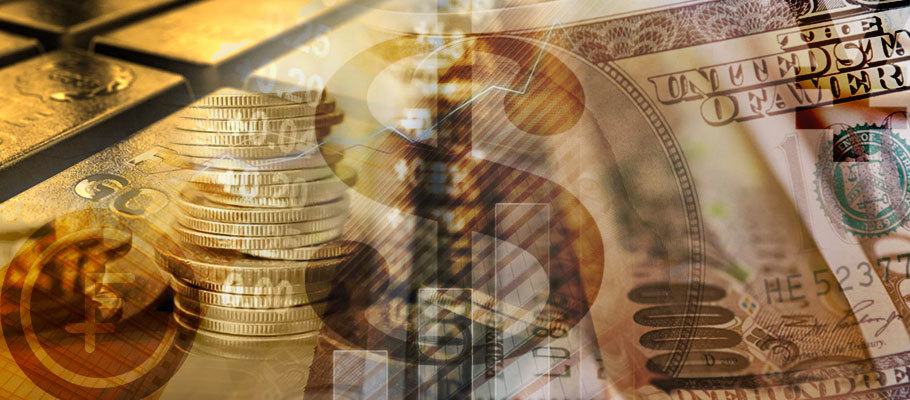
Published: February 11th, 2020
Rolling into 2020, the currency market continues where it left off in 2019 – dependent on central bank intervention to keep volatility low. The two biggest risks of last year – The US-China trade war and a hard-Brexit look to have subsided. However, the potential for hot conflict between the US and Iran could still escalate.
There is also looming uncertainty around the US impeachment process and coming Presidential elections. US politics, combined with general expectations of modest economic growth and moderate global monetary policy, will likely keep investors cautious – and on the lookout for safe-haven assets over the remaining 11 months.
FX-List has looked at the likely investment bolt holes this year and found that, while the rationales may have shifted slightly, the usual options for safety are mainly unchanged.
Last year, yen, the Swiss franc, gold, the dollar, and US Treasuries served investors well as shelters when risk trades disappeared. All have sustained their relative stability and liquidity.
Gold outperformed other havens in 2019, rising over 15%. Amid heightening US-Iran tensions, prices have already hit their highest levels since April of 2013. Conflict escalated in Iraq after the US killed a top Iranian Quds commander and an Iraqi militia leader.
With threats still being traded by both sides, rising mid-east tensions could mean the prime precious metal remains the best safety-bet in 2020. With expectations that light-touch central bank monetary policy will continue, gold’s attractiveness will likely be sustained, alongside diminished global price pressures and persistent concerns about economic growth prospects.
Negative interest rate policies have been adopted by all the major central banks, including the European Central Bank (ECB), Bank of Japan (BOJ), and the Swiss National Bank (SNB) – to the extent that they seem to have run out of other tools to promote growth and control inflation.
The US Federal Reserve (Fed) is expected to maintain the rate cut pause. However, markets are not ruling out a rate cut by the end of the year if the presidential election or trade war with Beijing derail prospects for economic growth.
Further retaliation from the US or Iran could also push gold higher as markets avoid riskier, higher-yielding assets in a time of market unrest.
Analysts have also noted the equities bull run that started in March 2009 is the longest ever recorded. If investors decide that steam is finally running out and valuations are too far in excess of underlying fundamentals, investors could take it as a sign to diversify into gold.
The US currency could come under pressure in 2020 if the Fed delivers a rate cut or the US-China trade dispute approached resolution.
Market watchers will remember that the US dollar and gold moved higher together last year. The dollar’s safe-haven appeal is difficult to dent, given that it’s the world's reserve currency and the required denomination for trading in oil and other major business transactions.
Demand for US Treasuries also picked up pace in Q4 2019 – though this was largely down to the Fed buying them up to calm the troubled Repo and Treasury markets.
Treasury bills are considered to be risk-free since they are backed by the US government. Strong stock market performance, however, combined with likely improvement in the US economic outlook and optimism of an and to the China trade dispute, could mean US Treasuries take a knock.
Yen has been thought of as a safe-haven for decades, and it’s usually the go-to currency in periods of risk-aversion. 2019 saw the same pattern as yen gained nearly 1% against the dollar against the backdrop of political, growth, and trade risks we’ve already discussed.
Yen’s appreciation will likely carry through 2020 thanks to the simmering US-Iran conflict, ongoing US-China trade tensions, and rising fears of a global recession. All of these tensions could put a dent in global growth prospects, particularly if oil continues to inch up.
While Japanese economic growth has been modest amongst negative yields and deflationary pressures, Japan’s massive holdings of foreign assets and carry trade unwinding mean the yen will continue to enjoy safe-haven status. It’s also worth remembering that when markets turn bearish, the Japanese tend to repatriate their capital, boosting the domestic currency.
We expect the Swiss franc will also continue its decades-long run as safe-haven currency this year. Like Japan, Switzerland has sizeable current account surpluses. The Franc rose 1.4% vs the USD in 2019, and its uptrend is expected to continue, with the caveat that the Swiss National Bank could intervene in foreign exchange markets if an overvalued franc limit’s gains.
January has already passed by but the economic and political calendars are full of events which can impact markets. Central banks and monetary decisions drive forex markets, but other fundamentals will make their presence felt as 2020 unfolds.
We’ll be watching for signals connected to the US Presidential election and its impact on the US stock market. Accepting the correlations between equities and forex markets, expect rising volatility to affect how currencies are traded this year.